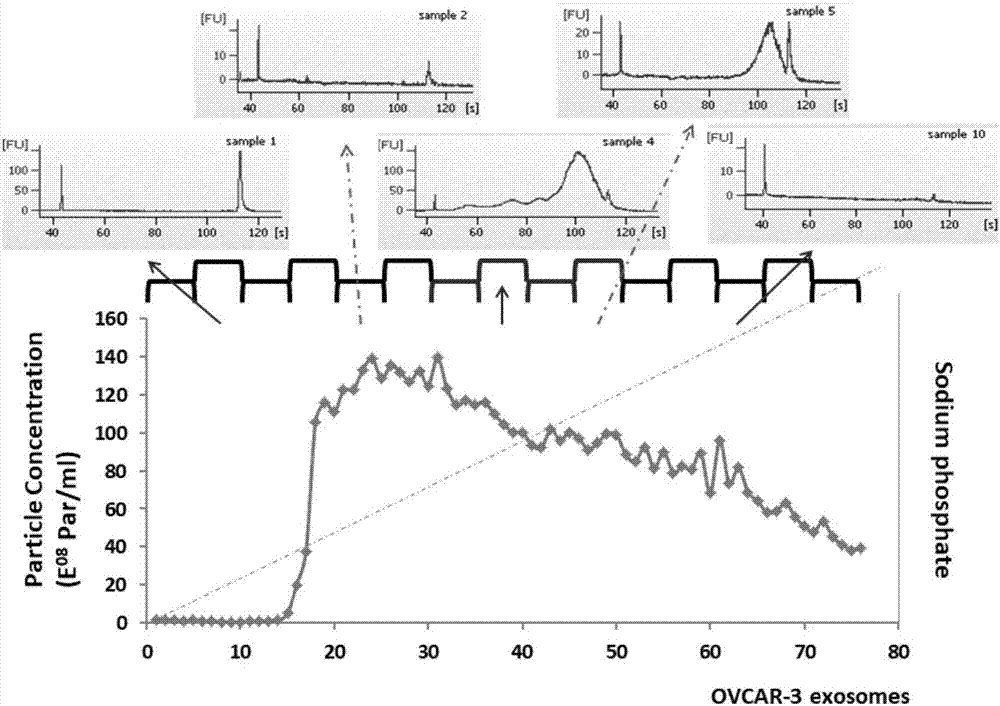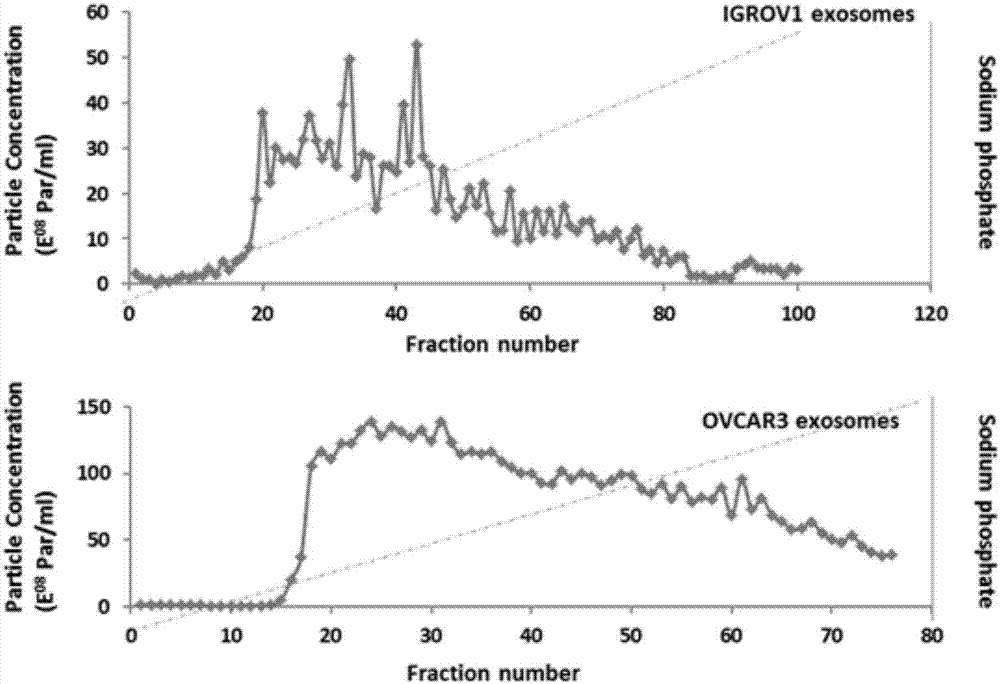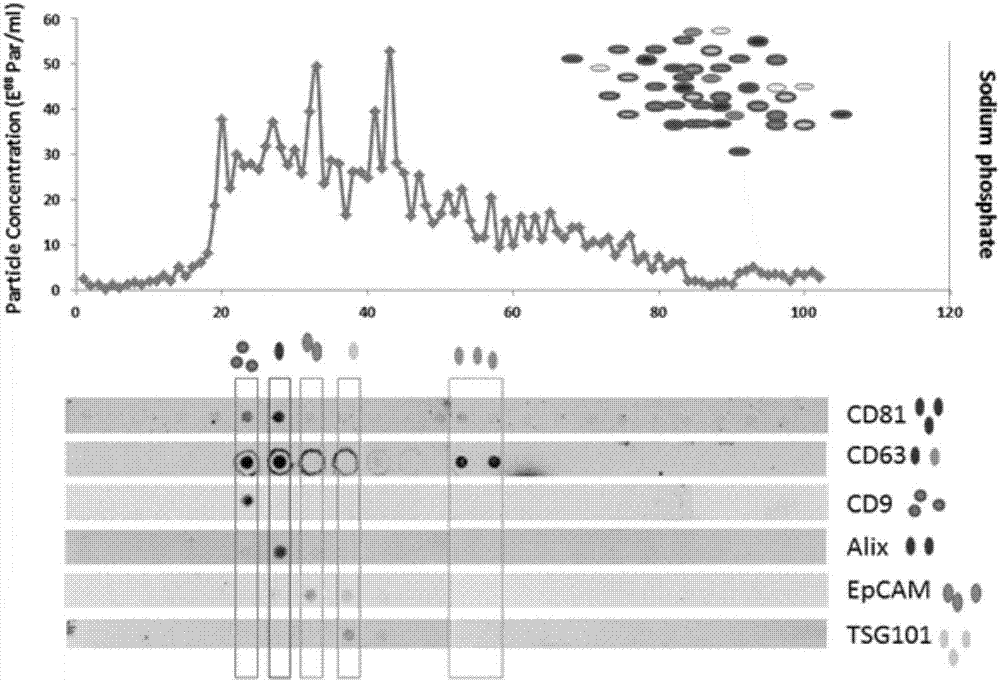Method for separating and purifying various exosome subgroups
A technology of exosomes and subpopulations, applied in artificial cell constructs, tumor/cancer cells, vertebrate cells, etc., can solve the problems of lengthy, low yield, time-consuming and expensive, and achieve simple operation and great application prospects Effect
- Summary
- Abstract
- Description
- Claims
- Application Information
AI Technical Summary
Problems solved by technology
Method used
Image
Examples
Embodiment 1
[0056] Example 1 Method for Isolating and Purifying Different Exosome Subgroups
[0057] 1. The present invention constructs a method for isolating and purifying different exosome subgroups, which can also be used to specifically enrich exosomes secreted by cancer cells, including the following specific steps:
[0058] (1) A method for separating and purifying total exosomes from culture medium (cell culture fluid):
[0059] Centrifuge 100-500ml of cell culture solution at 500g at 4°C for 5 minutes to remove suspended cells, and then centrifuge the supernatant at 2500g at 4°C for 15 minutes to remove cell debris, and then filter through a 0.22-micron pore size filter to remove larger microbubbles; the supernatant The solution was concentrated using an ultrafiltration centrifugal filter tube ultravel-100 membrane. This step not only concentrates exosomes, but also eliminates a large part of foreign proteins with a molecular weight less than 100 kDa. The concentrated supernata...
Embodiment 2
[0072] Example 2 Analysis of Isolated and Purified Exosome Subpopulations
[0073] 1. The protein concentration of the exosome subpopulation isolated and purified in Example 1 was measured by the absorbance at 280 nm of the Nanodrop device, and the number and particle size distribution of the exosome were detected by a nanoparticle tracking analyzer. Western blot and Dotblot analysis were used to analyze the specific proteins contained in the obtained exosome subpopulations.
[0074] In addition, the total RNA and DNA of each exosome subpopulation were extracted and evaluated by Agilent 2100 bioanalyzer (bioanalyser). The proteomic analysis of exosome subsets refers to the method reported in the literature (Shevchenko, A et al. 2006, Nature protocols 1, 2856-2860) and the Singapore Experimental Therapeutics Center (Experimental Therapeutics Centre) Proteomics Analysis Sample Preparation Manual.
[0075] 2. We observed that exosomes can be eluted at different phosphate conc...
PUM
 Login to View More
Login to View More Abstract
Description
Claims
Application Information
 Login to View More
Login to View More - R&D
- Intellectual Property
- Life Sciences
- Materials
- Tech Scout
- Unparalleled Data Quality
- Higher Quality Content
- 60% Fewer Hallucinations
Browse by: Latest US Patents, China's latest patents, Technical Efficacy Thesaurus, Application Domain, Technology Topic, Popular Technical Reports.
© 2025 PatSnap. All rights reserved.Legal|Privacy policy|Modern Slavery Act Transparency Statement|Sitemap|About US| Contact US: help@patsnap.com



